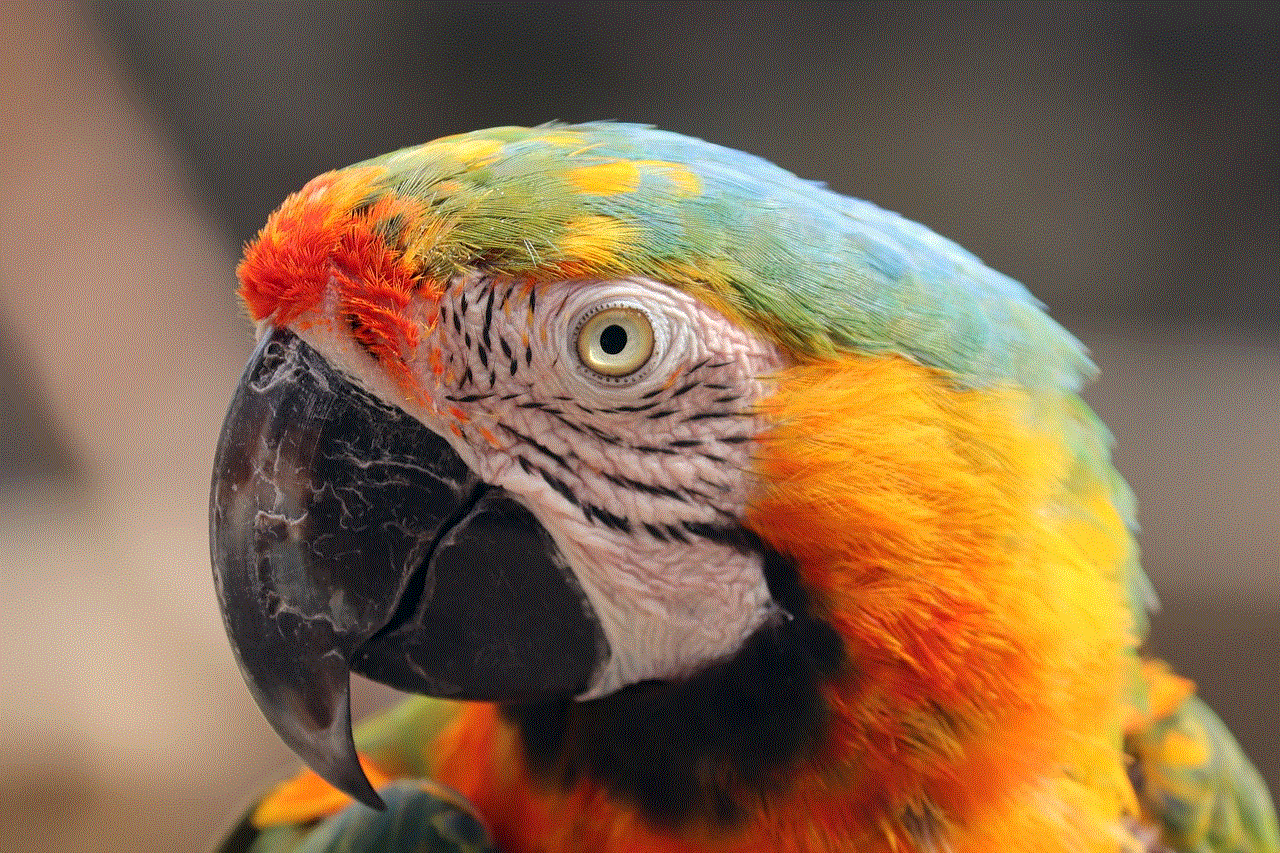how to see your blocked list on instagram
Instagram has become one of the most popular social media platforms in recent years, with over 1 billion monthly active users. With its focus on visual content, it has become a go-to app for sharing photos and videos with friends, family, and followers. However, like any other social media platform, Instagram also has its share of unwanted interactions and users. To combat this, Instagram provides a feature to block users. But, how can you see your blocked list on Instagram? In this article, we will discuss everything you need to know about the Instagram block list.
What is the Instagram Block List?
The Instagram block list is a feature that allows users to block other users from interacting with them on the platform. When a user is blocked, they are unable to see or interact with the person who has blocked them. This includes not being able to view their posts, stories, or send them direct messages. The blocked user will also not be notified that they have been blocked, making it a discreet way to prevent unwanted interactions.
Why Do People Block Others on Instagram?
There can be various reasons why someone might choose to block another user on Instagram. Some common reasons include:
– Harassment or bullying: Unfortunately, social media has become a breeding ground for online harassment and bullying. Instagram’s block feature allows users to protect themselves from such unwanted interactions.
– Offensive or inappropriate content: Users can also block someone if they find their content offensive or inappropriate. This could include hate speech, explicit content, or any other content that goes against Instagram’s community guidelines.
– Unwanted attention: Some users might block others if they are receiving unwanted attention, such as excessive messages or comments.
– Personal reasons: A user may choose to block someone for personal reasons, such as a falling out or a disagreement.
How to Block Someone on Instagram?
Now that we know why someone might choose to block another user, let’s discuss how to block someone on Instagram. The process is relatively simple and can be done in a few easy steps:
Step 1: Open the Instagram app on your device.
Step 2: Go to the profile of the user you want to block.
Step 3: Tap on the three dots in the top right corner of their profile.
Step 4: A menu will pop up, select “Block” from the options.
Step 5: A confirmation message will appear, tap on “Block” again to confirm.
The user will now be blocked, and they will no longer be able to interact with you on Instagram.
How to See Your Blocked List on Instagram?
Now that you know how to block someone on Instagram, let’s discuss how to see your blocked list. Instagram does not have a specific page or section dedicated to the blocked list, so the process is not as straightforward. However, there are a few ways to access your blocked list on Instagram.
Method 1: Through your Privacy Settings
Step 1: Open the Instagram app on your device.
Step 2: Tap on your profile icon in the bottom right corner.
Step 3: Tap on the three lines in the top right corner to access the menu.
Step 4: Select “Settings” from the menu.
Step 5: Tap on “Privacy” and then select “Blocked Accounts.”
Your blocked list will now be displayed, and you can unblock any user by tapping on their profile and selecting “Unblock.”
Method 2: Through Direct Messages
Step 1: Open the Instagram app on your device.
Step 2: Tap on the paper plane icon in the top right corner to access your direct messages.
Step 3: In the top right corner, tap on the “i” icon.
Step 4: This will take you to the “Info” page, where you can see your blocked list under “Blocked Accounts.”
Method 3: Through a Direct Message with the Blocked User
Step 1: Open the Instagram app on your device.
Step 2: Go to your direct messages and open a conversation with the user you have blocked.
Step 3: Tap on the three dots in the top right corner of the conversation.
Step 4: Select “View profile” from the options.
Step 5: This will take you to the blocked user’s profile, where you can see the “Unblock” option.
Why Can’t I See My Blocked List on Instagram?
If you are unable to see your blocked list on Instagram, there can be a few reasons for it. Firstly, you might not have any users blocked. In this case, the blocked list will not appear. Secondly, you might have accidentally unblocked a user, and they are no longer on your blocked list.
Another reason could be a technical glitch with the app. In this case, try restarting the app or clearing the cache. If the issue persists, you can reach out to Instagram’s support team for assistance.
How to Unblock Someone on Instagram?
If you have blocked someone on Instagram and have now changed your mind, you can easily unblock them. Here’s how:



Step 1: Open the Instagram app on your device.
Step 2: Go to your blocked list using one of the methods mentioned earlier.
Step 3: Select the user you want to unblock.
Step 4: Tap on “Unblock” from their profile.
Step 5: A confirmation message will appear, tap on “Unblock” again to confirm.
The user will now be unblocked, and they will be able to see your posts and interact with you on Instagram.
Final Thoughts
The Instagram block list is a useful feature that allows users to protect themselves from unwanted interactions. Whether it’s harassment, offensive content, or personal reasons, the block feature gives users control over their online experience. While the process of accessing the blocked list on Instagram might not be as straightforward, it is still relatively easy to do. If you are ever unsure about how to access your blocked list or have any other issues, you can always reach out to Instagram’s support team for assistance. Remember, it’s essential to use the block feature responsibly and only block someone if you genuinely feel the need to do so.
how to hide a app on iphone
Hiding apps on your iPhone can be a useful way to keep your device organized and your privacy protected. Whether you want to hide an app from prying eyes or simply declutter your home screen, there are a few easy ways to do so. In this article, we will discuss the various methods you can use to hide apps on your iPhone, as well as the benefits and potential drawbacks of doing so.
Why Hide Apps on Your iPhone?
There are a few reasons why you might want to hide apps on your iPhone. One of the most common reasons is to keep your privacy intact. If you have sensitive information or apps that you don’t want others to access, hiding them can provide an extra layer of security.
Hiding apps can also help you declutter your home screen and make it easier to find the apps you use most frequently. With thousands of apps available on the App Store, it’s easy for your home screen to become cluttered and overwhelming. By hiding apps you don’t use often or don’t want to see, you can create a more organized and streamlined home screen.
Another possible reason for hiding apps is to restrict access for certain users, such as children. By hiding apps, you can control what apps are visible and accessible on your iPhone, making it easier to monitor and manage your child’s usage.
How to Hide Apps on Your iPhone
There are a few different ways to hide apps on your iPhone, each with its own benefits and drawbacks. Let’s take a look at the different methods you can use to hide apps on your device.
1. Create Folders
Creating folders is a simple and effective way to hide apps on your iPhone. To create a folder, simply press and hold an app until all the apps on your home screen start to wiggle. Then, drag the app on top of another app to create a folder. Once the folder is created, you can add more apps to it by dragging them onto the folder.
To hide an app within a folder, simply move the app to the second page of the folder. This way, the app won’t be visible when you open the folder. You can also rename the folder to something inconspicuous, making it less likely for anyone to find the hidden app.
While this method is easy and doesn’t require any additional software, it may not be the most secure option. If someone knows where to look, they can easily find the hidden app within the folder.
2. Use the App Library



The App Library is a new feature introduced in iOS 14 that automatically organizes your apps into categories. This feature can also help you hide apps by moving them to a separate section that is not visible on your home screen.
To access the App Library, simply swipe left on your home screen until you reach the last page. Here, you will find all your apps sorted into categories such as Social, Entertainment, and Productivity. You can also use the search bar at the top to find a specific app.
To hide an app in the App Library, press and hold the app until it starts to wiggle, then tap on the “Remove App” option. This will remove the app from your home screen and move it to the App Library. You can also choose to hide the entire category by pressing and holding on the category and selecting “Remove Category.”
One downside of using the App Library to hide apps is that it only works on devices running iOS 14 or later. If you have an older device, you won’t be able to use this method.
3. Use Screen Time Restrictions
Screen Time is a built-in feature on iPhones that allows you to monitor and restrict usage of certain apps and features. While the main purpose of this feature is to help you control your screen time, it can also be used to hide apps.
To use this method, go to Settings > Screen Time > Content & Privacy Restrictions. Make sure the feature is turned on, then go to Allowed Apps and turn off the switch next to the app you want to hide. This will remove the app from your home screen and restrict access to it.
To access the hidden app, you will need to enter a passcode. This method is great for restricting access for children or other users, but it can be inconvenient if you want to access the app frequently.
4. Use Third-Party Apps
There are also third-party apps available on the App Store that can help you hide apps on your iPhone. These apps usually work by creating a fake cover for the hidden app, making it look like a regular app on your home screen.
Some popular apps for this purpose include Hide My App and Secret Apps. These apps require you to set up a passcode or use Touch ID/Face ID for added security. They also have the option to customize the fake cover for the hidden app, making it harder for anyone to find it.
While these apps can be effective in hiding apps, they may not be completely foolproof. If someone knows the app is hidden, they can still access it by entering the passcode or using Touch ID/Face ID.
Benefits and Drawbacks of Hiding Apps on Your iPhone
Hiding apps on your iPhone can have both benefits and drawbacks. Let’s take a look at some of the pros and cons of this practice.
Benefits:
– Increased privacy and security for sensitive apps
– Decluttered home screen for easier navigation
– Control over app access for children or other users
– Can be used to restrict screen time and promote healthier device usage
Drawbacks:
– Some methods may not be as secure as others
– Hidden apps can still be accessed with the right knowledge
– Third-party apps may require payment or contain ads
– Can be time-consuming to set up and maintain



Conclusion
Hiding apps on your iPhone can be a useful practice for various reasons, such as protecting your privacy and decluttering your home screen. There are a few different methods you can use to hide apps, each with its own benefits and drawbacks. Whether you choose to create folders, use the App Library, or restrict apps with Screen Time, make sure to choose a method that best suits your needs and provides the level of security you desire.